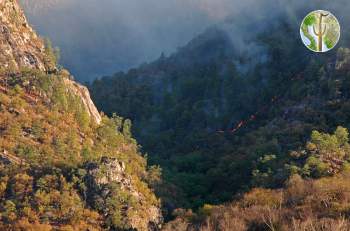Herpetofauna of the Mesa Tres Ríos Area in the Northern Sierra Madre Occidental of Sonora, Mexico
The Sierra Madre Occidental (SMO) extends from northeastern Sonora and northwestern Chihuahua south through western Mexico to the Transverse Volcanic Axis in the state of Guanajuato, which forms a montane bridge to the Sierra Madre del Sur to the south and the Sierra Madre Oriental to the east. All of these mountain ranges are volcanic in origin and are part of the American Cordillera that shapes the western backbone of North, Central, and South America, and Antarctica (Dickinson 2004).


